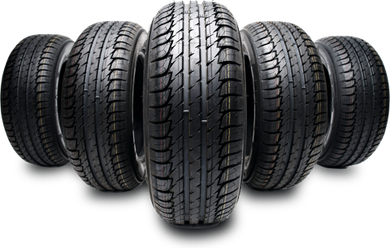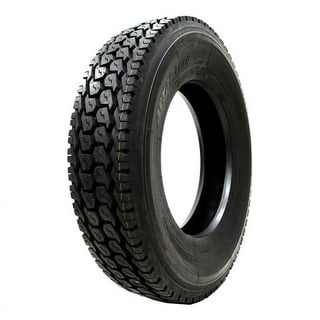Tire Service: Comprehending Tire Pressure Monitoring Equipments
Comprehending Tire Stress Tracking Equipments (TPMS) is a crucial element of preserving optimal car performance and security on the road. With advancements in auto modern technology, TPMS has become a standard attribute in modern vehicles, providing real-time information on tire pressure degrees. Delving much deeper into the details of TPMS, one can reveal the numerous elements that make up this system and the value of each in ensuring precise tracking. From direct to indirect TPMS systems, the landscape of tire pressure tracking varies, each with its special set of benefits and considerations. Stay tuned to untangle the complexities of TPMS, from upkeep tips to the undeniable advantages of keeping your tires correctly inflated. morris tire and alignment.

Relevance of TPMS
The significance of Tire Pressure Surveillance Equipments (TPMS) hinges on their capability to boost car safety and security and performance via real-time surveillance of tire stress levels. Preserving the correct tire pressure is critical for guaranteeing optimal handling, braking, and total security of a car. TPMS supplies chauffeurs with prompt feedback on any overinflated or underinflated tires, enabling prompt adjustments to be made.
Components of TPMS
Sensors are generally situated in the tire valve stem or attached to the wheel setting up, where they determine tire pressure and send information to the control module. Some advanced TPMS designs likewise show the real tire pressure readings for each tire, supplying drivers with real-time info to guarantee optimum tire efficiency and safety. By checking tire pressure continually, TPMS assists prevent crashes, minimizes tire wear, and improves gas effectiveness, making it an important part for vehicle safety and security and performance. tire shop morris.
Sorts Of TPMS

On the other hand, indirect TPMS depends on the automobile's wheel rate sensing units to monitor tire pressure. This system finds underinflation by contrasting the rotational rates of the wheels. Indirect TPMS is much less pricey than straight TPMS, as it utilizes existing sensing units within the vehicle.
While direct TPMS provides a lot more precise analyses, indirect TPMS is easier in layout and typically needs less maintenance. Both systems have their advantages and restrictions, and the option between them frequently depends upon elements such as expense, car make, and personal preference. Understanding the differences between these 2 kinds of TPMS can assist automobile owners make notified decisions concerning tire maintenance and safety and security.
TPMS Upkeep Tips
Reliable maintenance of TPMS is vital for guaranteeing optimal efficiency and safety and security of your lorry. Consistently evaluating the TPMS sensing units for any type of damage or corrosion is essential. Make certain that the sensors are tidy and cost-free from debris that can disrupt their performance. Furthermore, it is recommended to check the sensing unit batteries occasionally and change them as needed to guarantee exact readings. Conduct regular checks on the tire stress levels and contrast them with the TPMS readings to guarantee they are constant. If there are any type of disparities, rectify the system adhering to the maker's guidelines. Furthermore, during tire turning or replacement, ensure that the TPMS components are taken care of meticulously to stop any prospective damages. If the TPMS cautioning light illuminates on the control panel, resolve the problem quickly by inspecting the tire pressures and the overall system for any type of mistakes. By sticking to these upkeep suggestions, you can lengthen the lifespan of your TPMS and improve the security of your driving experience.
Advantages of Correct Tire Stress
Keeping correct tire stress, as stressed in TPMS Upkeep Tips, is important for enjoying the countless benefits associated with optimum tire stress degrees. One of the main benefits of maintaining the right tire pressure is boosted gas efficiency. When tires are effectively blown up, there is less rolling resistance, bring about better gas economic situation. In addition, appropriate tire pressure ensures also tire wear, expanding the life expectancy of the tires and promoting safer driving problems. With the ideal tire stress, lorries additionally have far better handling and grip, particularly in adverse climate condition. This can boost total driving performance and safety and security for the vehicle driver and guests. Preserving optimal tire pressure can add to a smoother and a lot more comfortable experience by decreasing resonances and noise triggered by underinflated tires. In Click This Link conclusion, the benefits of correct tire pressure surpass just tire durability; they encompass enhanced fuel effectiveness, boosted security, much better vehicle efficiency, and total driving comfort.
Final Thought
To conclude, comprehending tire stress tracking systems (TPMS) is crucial for maintaining ideal tire pressure and making certain vehicle safety. By recognizing the relevance of TPMS, recognizing with its components, understanding the different kinds offered, sticking to proper maintenance suggestions, and recognizing the benefits of preserving appropriate tire pressure, motorists can boost their driving experience and lengthen the life-span of their tires. Proper tire pressure is key to efficient and safe vehicle operation.
